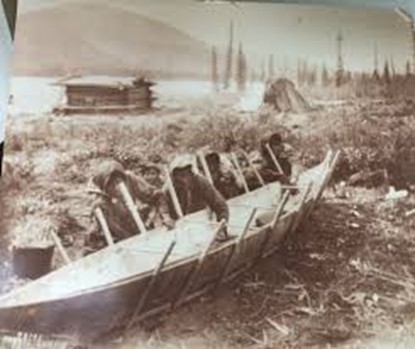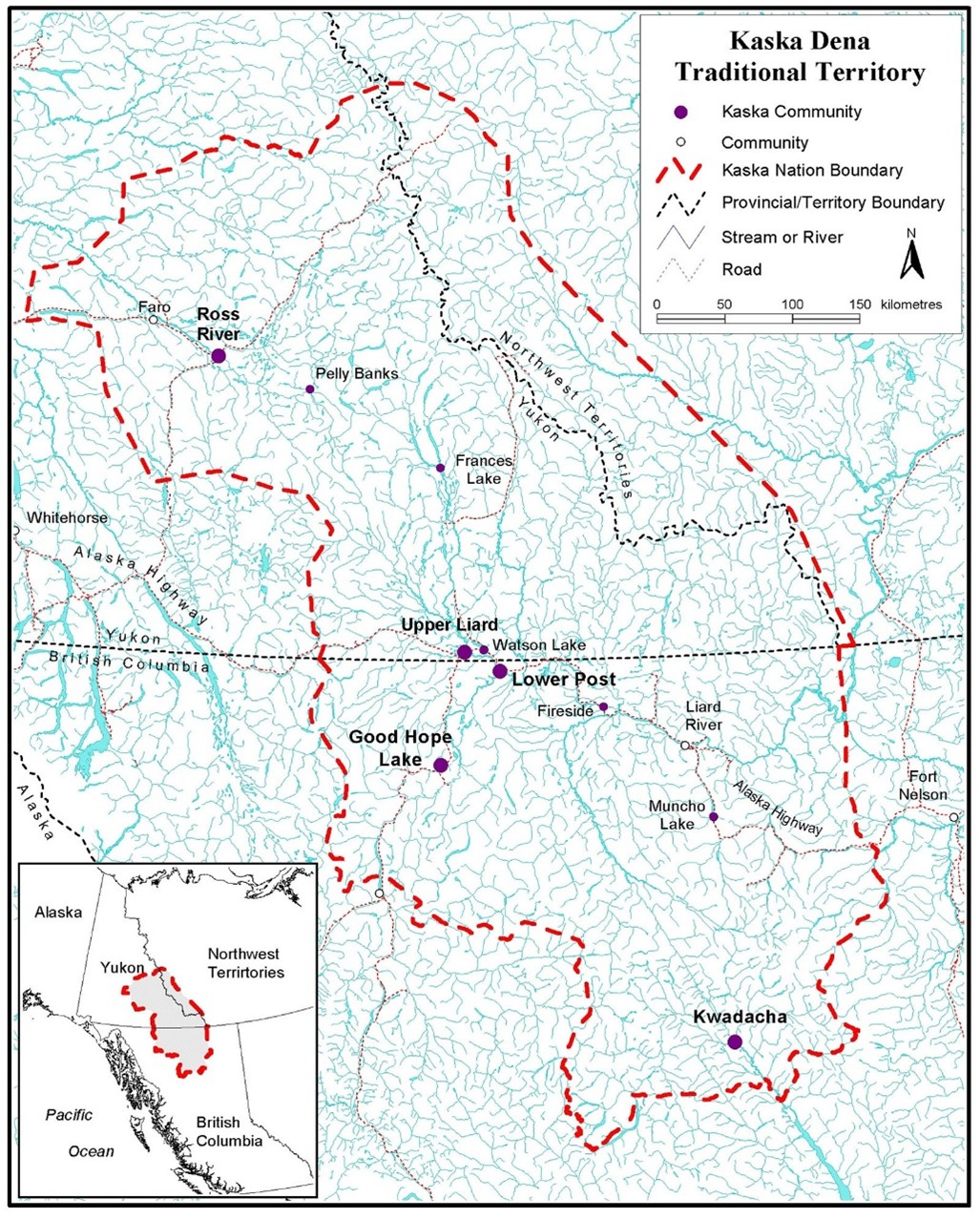The Yukon and Northwest Territories are two of Canada’s northernmost territories and are home to many remote Indigenous communities that have thrived there for thousands of years despite the region’s harsh climate and isolation. These communities, often accessible only by plane, boat, or seasonal ice roads, maintain a deep connection to the land, traditions, and each other. Life in such a place is both challenging and rewarding, defined by resilience, cultural preservation, and a unique relationship with nature. Indigenous communities continue to thrive despite the challenges of harsh winters, geographic isolation, and modernization. These communities maintain a deep connection to the land, relying on traditional knowledge and cultural practices passed down for generations. There are many First Nation communities in these provinces. Among them, the Tr’ondëk Hwëch’in, Kaska Dena, and Tetlit Gwich’in stand out for their unique histories, traditions, and ways of life. Though they face modern challenges such as climate change and limited access to resources, their resilience and commitment to cultural preservation allow them to navigate the evolving world while maintaining their ancestral roots.
The first section of this paper provides a high-level overview of the environment of the various First Nations live in. The second section, profiles the three First Nation Communities and their approach to life in the remote corners of Canada.
The Connection to the Land
Indigenous communities in the far reaches of these provinces rely heavily on the land for sustenance and survival. Traditional hunting, fishing, and trapping remain essential ways of life, providing food while also reinforcing cultural traditions. Moose, caribou, and fish such as salmon and whitefish are dietary staples, often prepared using methods passed down through generations, such as smoking or drying. Foraging for berries and medicinal plants in the summer months also plays a role in maintaining a sustainable and self-sufficient way of life.
The land is not just a source of food but also a teacher. Elders pass down knowledge of survival skills, seasonal changes, and animal behavior to younger generations, ensuring that these traditions persist. Living in harmony with nature is a core principle of Indigenous cultures, shaping both daily life and long-term community values.
Harsh Climate and Isolation
One of the biggest challenges of living in a remote community is the extreme climate. Winters are long and brutal, with temperatures regularly plunging below -40°C. The cold, coupled with limited daylight hours, requires careful planning and preparation. Firewood must be stockpiled, and homes need to be well-insulated to withstand the harsh conditions.
Isolation also presents logistical difficulties. Supplies must be flown in or transported via long, treacherous roads, making groceries and goods expensive and sometimes scarce. Medical care can be difficult to access, with residents often having to travel great distances for specialized treatment. However, this isolation also fosters a strong sense of self-reliance and cooperation within the community.
Community and Cultural Traditions
Despite the physical remoteness, Indigenous communities are deeply connected through cultural traditions and shared experiences. Community gatherings, such as potlatches, drum dances, and storytelling events, are vital for maintaining cultural identity. Elders play a crucial role in preserving Indigenous languages, histories, and spiritual beliefs, ensuring that they continue to be passed down to future generations.
Education in these communities is often tailored to reflect both modern curriculum and traditional knowledge. Schools incorporate lessons on Indigenous history, language, and land-based learning to give children a sense of pride in their heritage. Many young people are also encouraged to take part in programs that blend modern skills with traditional practices, such as guiding, fishing, or environmental conservation.
The Modern Reality and Future Challenges
While traditional ways of life are still central to these communities, modernization has brought both benefits and challenges. The internet and satellite communications have helped bridge the gap between remote communities and the outside world, providing access to education, healthcare, and economic opportunities. However, there is also concern about the erosion of cultural traditions due to outside influences.
Climate change is another pressing issue. Rising temperatures are affecting wildlife migration patterns, ice roads are becoming less reliable, and permafrost is melting, causing infrastructure problems. Indigenous communities in these provinces are among the first to witness these changes, and many are advocating for stronger environmental protections and sustainable practices.
~~~~~~~~~~~
Impact on life in remote corners of Canada for the Tr’ondëk Hwëch’in, Kaska Dena, and Tetlit Gwich’in Communities
Though they face modern challenges such as climate change and limited access to resources, their resilience and commitment to cultural preservation allow them to navigate the evolving world while maintaining their ancestral roots. Indigenous communities in these provinces have always lived in harmony with the land, relying on traditional hunting, fishing, and gathering practices.
I have chosen as an example, three Indigenous First Nations to include:
The Tr’ondëk Hwëch’in: People of the River

The Tr’ondëk Hwëch’in (meaning “people of the river”) have traditionally lived along the Yukon and Klondike Rivers, depending on the seasonal salmon runs for sustenance. Salmon fishing remains a cornerstone of their culture, with fish camps serving not only as places to harvest food but also as sites for teaching younger generations about their heritage. Moose hunting, berry gathering, and trapping continue to be vital aspects of life.
The Kaska Dena: Stewards of the Boreal Forest
Unlike the river-oriented Tr’ondëk Hwëch’in, the Kaska Dena are deeply connected to the forests and mountainous terrain of southeastern Yukon and the southwest corner of the Northwest Territories. They have long been expert big-game hunters, following caribou herds and hunting moose, bear, and smaller game. Trapping, once an important part of the fur trade, continues to be a key activity, both for economic survival and cultural preservation. The Kaska Dena also have a profound spiritual connection to the land, with many of their oral traditions and ceremonies emphasizing respect for animals and the environment.

The Tetlit Gwich’in: Masters of the Caribou Hunt

The Tetlit Gwich’in (meaning “people of the headwaters”) are part of the larger Gwich’in Nation, traditionally inhabiting the Peel River region near the Yukon-Northwest Territories border. The caribou is central to Tetlit Gwich’in culture, providing food, clothing, tools, and spiritual meaning. For thousands of years, they have expertly tracked the Porcupine caribou herd, using sustainable hunting practices that ensure the herd’s survival.
Fishing also plays a key role in their subsistence lifestyle, with whitefish and arctic grayling being important food sources. Traditional knowledge of the land, including weather patterns and seasonal changes, allows the Tetlit Gwich’in to live in balance with their environment.
Challenges of Isolation and Harsh Climate
Life in these remote communities is shaped by the extreme environment. Winters are long and unforgiving, with temperatures often dropping below -40°C. In such conditions, survival requires careful planning, from stockpiling firewood to preserving food supplies. Geographic isolation also makes transportation and access to essential services difficult. Many communities are accessible only by small planes, boats, or seasonal ice roads, making supplies expensive and healthcare services limited. In emergencies, residents may have to travel hundreds of kilometers to reach a hospital. However, this isolation has also fostered a strong sense of self-reliance, with community members supporting one another through shared resources and knowledge.
Cultural Traditions and Community Life
Despite the challenges of remoteness, Indigenous communities in these regions have maintained strong cultural traditions.
The Role of Elders and Language Preservation
The Tr’ondëk Hwëch’in, Kaska Dena, and Tetlit Gwich’in place great importance on their elders, who serve as the keepers of traditional knowledge. Through storytelling, they pass down legends, survival skills, and language.
- The Hän language of the Tr’ondëk Hwëch’in is being revitalized through cultural programs.
- The Kaska language remains a critical part of the Kaska Dena identity, with efforts to keep it alive.
- The Gwich’in language is actively taught in schools and immersion programs to ensure future generations can speak and understand their ancestral tongue.
Gatherings and Celebrations
Community gatherings such as potlatches, drum dances, and seasonal feasts strengthen social bonds and reinforce cultural identity. Music, beadwork, and traditional crafts remain vibrant forms of artistic expression, linking the past to the present. The Tetlit Gwich’in hold special ceremonies honoring the Porcupine caribou, celebrating their deep connection to the herd that sustains them.
Modern Adaptation and Future Challenges
Though deeply rooted in tradition, Indigenous communities are also adapting to modern realities.
Environmental and Climate Concerns
Climate change is having a profound impact on traditional ways of life. Warmer temperatures are altering wildlife migration patterns, affecting caribou and salmon populations. Ice roads, once a reliable means of winter travel, are becoming less dependable due to melting permafrost.
- The Tr’ondëk Hwëch’in are working on conservation efforts to protect salmon populations.
- The Kaska Dena are leading initiatives in sustainable forestry and environmental stewardship.
- The Tetlit Gwich’in are vocal advocates for protecting the Porcupine caribou herd from industrial development.
Technology and Economic Development
While modernization presents challenges, it also brings opportunities. The expansion of internet and satellite communications has allowed remote communities to access online education, healthcare, and economic opportunities.
- The Tr’ondëk Hwëch’in are involved in eco-tourism projects, sharing their culture with visitors.
- The Kaska Dena are exploring renewable energy and sustainable industries.
- The Tetlit Gwich’in are strengthening partnerships for land protection and Indigenous-led conservation.
Some Final Thoughts
Life in a remote Indigenous community in the Yukon and Northwest Territories is a delicate balance between tradition and adaptation. The Tr’ondëk Hwëch’in, Kaska Dena, and Tetlit Gwich’in exemplify the resilience of Indigenous peoples, maintaining their deep connection to the land while embracing new opportunities. Despite the challenges posed by isolation, climate change, and modernization, these communities continue to thrive through cultural preservation, environmental stewardship, and strong community bonds. Their enduring presence is a testament to the strength of Indigenous traditions and their vital role in shaping the region’s past, present, and future.


